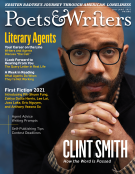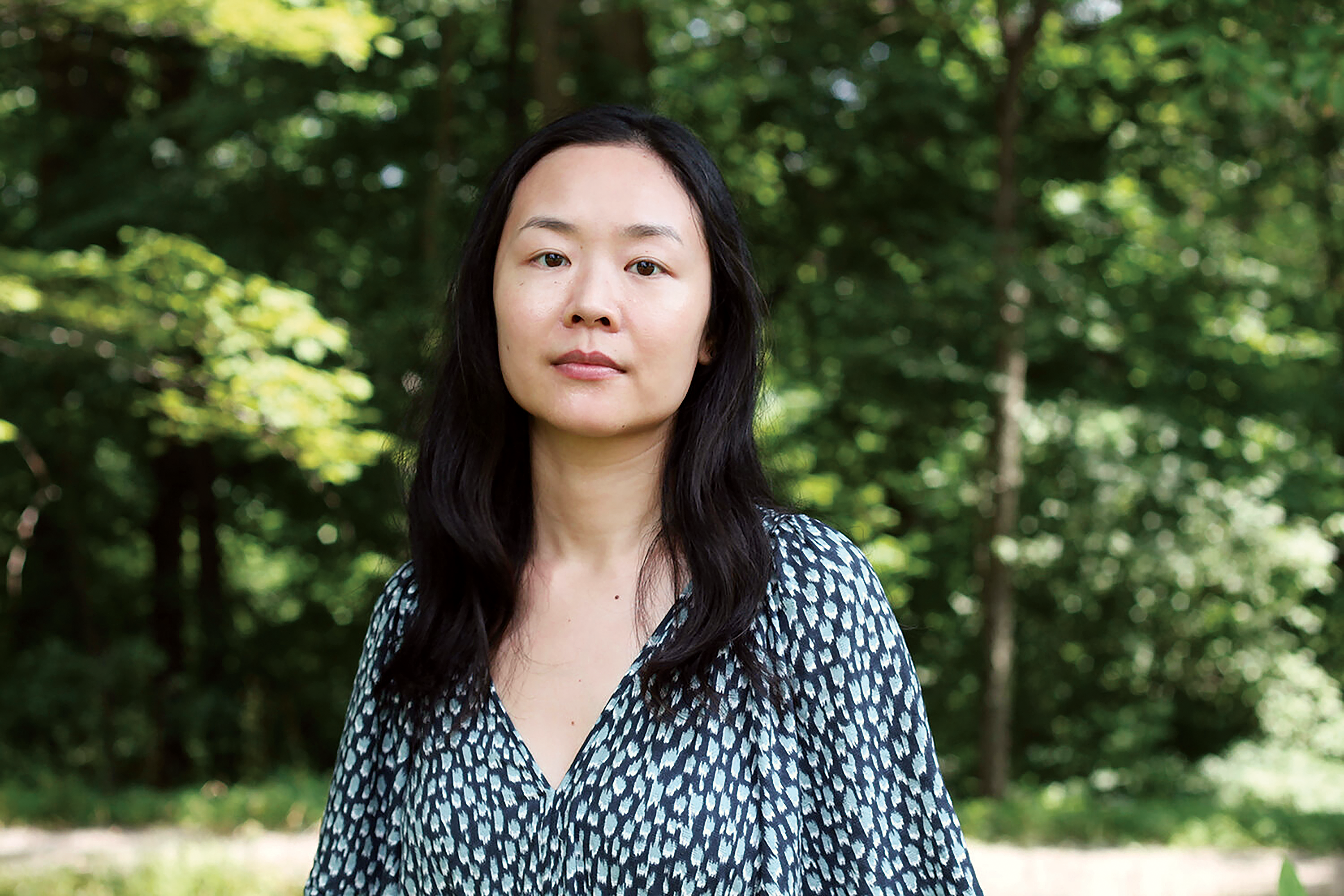Ghost Forest
Pik-Shuen Fung
Bamboo Groves in Mist and Rain
After class, I walked to a teahouse by the West Lake. A layer of mist hovered above the water, and among the dangling weeping willows, peach blossoms began to bloom. I sat down by the window and ordered osmanthus tea, which I had never tried before. In the glass teapot, hundreds of tiny yellow flowers floated in hot water. I lifted the lid and the steam smelled of apricots and honey.
As I sipped the tea, I searched for Chinese women artists on my laptop, and began reading about the poet and painter Guan Daosheng. Born in 1262, she was considered to be the greatest female painter in Chinese history, known for her paintings of ink bamboo, which was an unusual genre for women artists at the time. Bamboo was thought to embody strong and gentlemanly qualities—the ability to stay green through the winter, and to bend without breaking. Guan’s bamboo paintings were widely praised. Critics said her confident and vigorous brushstrokes showed no signs that they came from a woman.
My research on Guan Daosheng led me to another artist, active around 925, known as Lady Li. In one account, Lady Li sat outside one evening and noticed the swaying shadows of bamboo under the moonlight. In a moment of inspiration, she picked up her brush, dipped it in ink, and traced the shadows on her paper window pane. From then on, more and more artists imitated Lady Li’s technique, and that was how the genre of ink bamboo was born.
Guan was married to the artist and calligrapher Zhao Mengfu. In her husband’s studio, nine years before her death, she wrote an inscription on one of her paintings:
To play with brush and ink is a masculine sort of thing to do, yet I made this painting. Wouldn’t someone say that I have transgressed? How despicable, how despicable.
This inscription survived, but the painting itself is now lost. Even though Guan Daosheng was seen as the greatest female painter in all of Chinese history, she has only one authenticated painting surviving today. Titled Bamboo Groves in Mist and Rain, the beautiful paper scroll shows feathery groves of bamboo growing along the edge of a riverbank.
This artwork is an example of Guan’s lasting contribution to the genre: she took the technique of ink bamboo and integrated it into landscape painting.
Out of curiosity, I looked up how many of Zhao Mengfu’s paintings remain. It turns out there are countless. His works are collected around the world.
Ghost Forest
A month later, my dad came to Hangzhou. I suggested he visit during the hundredth anniversary of the China Academy of Art, since there would be celebrations. The night before he arrived, I couldn’t sleep. I realized he had never visited me anywhere before, and we hadn’t spent any time alone since I interned in Hong Kong two summers back. I read every tourist guide to Hangzhou, and made a spreadsheet of itineraries.
It was sunny the day my dad arrived. We watched the opening ceremony, which began with firecrackers and a lion dance. Several famous artists attended, and many of them signed the school guestbook with beautiful calligraphy. We stared as an old man with long gray hair and a long gray beard dressed in long gray clothes signed the guestbook. We listened to a woman play pipa in the lobby.
Then I gave my dad a tour of the school campus, and led him to the international student exhibition. For weeks, I crumpled painting after painting before submitting one to the jury. Unlike oil painting, ink painting was unforgiving, and I couldn’t cover up mistakes with more paint.
Whenever I hesitated, holding the brush still for a second too long, the ink flooded the delicate paper. I didn’t tell my dad that my painting had been accepted. I wanted it to be a surprise.
We walked up the pale wood stairs to the top floor. The room was bright, and on the white wall across from the stairs, my painting hung in a dark wood frame under a track of lights.
In the painting, I am riding a brown bird. We are soaring above tree after tree, and each one is white and translucent. I washed white watercolor on gray rice paper to create that effect.
I titled the painting Ghost Forest.
My dad stood in front of the painting for a long time, holding his hands behind his back.
Without looking at me he said, I think there is something wrong with you that you’re making art like this.
I stood there and watched as he walked away, still holding his hands behind his back. As he paced through the rest of the gallery, I stayed a few steps behind him.
Afterward, we went to Lingyin Temple, a Buddhist monastery. The word Lingyin translates to the place where one’s soul retreats. Founded in 326, it is one of the largest Buddhist temples in China, with numerous halls, statues, and grottoes within.
At the entrance, framed by deep green foliage, peaceful gray rock reliefs of Buddhas watched over the long line of people waiting to go inside. They say the temple is famous because people who pray there often see their wishes come true. We walked around in silence, entering the halls together, kneeling before different statues of Buddhas, putting our palms together to pray.
When we took a taxi back to the city center, I asked my dad what he wanted to do next.
Shouldn’t you be the one taking me around? he said.
We could go to the flower garden, I said.
Would that be your top recommendation?
I don’t know, I haven’t been there yet.
You’ve been in Hangzhou for over a month. You’re not very ambitious, are you?
I watched the West Lake pass by outside the taxi window. Mist began to collect on the glass, and soon, tadpoles of rain raced across the windows.
My ankle hurts, I said. I don’t feel like walking anymore.
I asked the taxi driver to drop me off at my dormitory instead. When we arrived, I got out of the car and went up the stairs without looking back. I walked down the dim hallway and knocked on my classmate’s door. She was cooking tomato soup on a hot plate in her bathroom.
I thought you were showing your dad around, she said.
Can I have some? I said, staring at the bubbles on the surface of the soup.
I sat down on her bed and ate two bowls.
Excerpted from Ghost Forest by Pik-Shuen Fung, Copyright © 2021 by Pik-Shuen Fung. Excerpted by permission of One World, an imprint and division of Penguin Random House LLC, New York. All rights reserved. No part of this excerpt may be reproduced or reprinted without permission in writing from the publisher.
(Photo: Benjamin Taylor)








